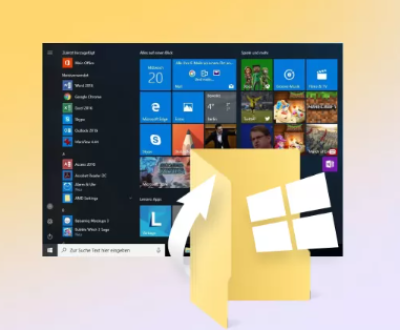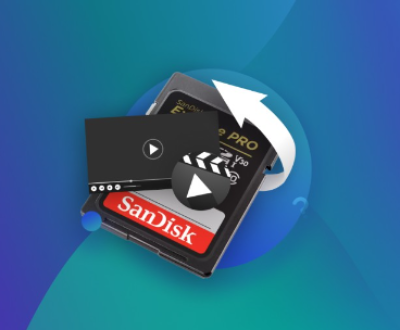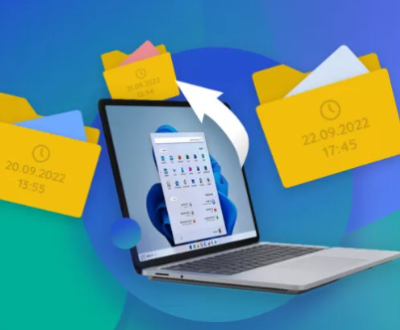Restoring an overwritten Word file can be a stressful task, especially if you realize that important content has been lost due to an accidental overwrite. This situation is fairly common, and luckily, there are several methods and tools you can use to recover the overwritten data. Overwriting means that the original version of the file has been replaced by a newer version. In cases where auto-save features are disabled or backup copies are not available, the recovery options become more challenging.
1. Overwritten Files
When you overwrite a file, the previous data is replaced by new content. The overwritten file is not automatically deleted; however, the new data takes up the space that the old data occupied. This is why it’s often hard to retrieve the overwritten file directly. In some cases, parts of the old file may still exist on your storage drive until they are completely overwritten by new data.

Overwriting can occur in several scenarios:
You accidentally save over a file with new content.
You save a file in a different location but under the same name.
You use the “Save As” function without renaming the file.
Understanding this process is crucial because, in some cases, if the overwritten content is not too complex, there may be an opportunity to recover it from backup files or other tools.
2. Checking for AutoSave and AutoRecovery Versions
Microsoft Word has a built-in AutoSave and AutoRecovery feature that may help you recover previous versions of your file. These features can be particularly useful if you were in the middle of editing and accidentally overwrote the file.
How to Check AutoSave and AutoRecovery Versions:
Word AutoRecovery (Windows/Mac):
Open Word.
Go to the File tab.
Click on Options.
In the Save section, you’ll see the AutoRecover file location. You can check this directory for any saved versions of your document.
Recover AutoSaved Files:
In Word, go to File > Info.
Look for the Manage Document button.
If Word detects an auto-saved version of your file, you can click Recover Unsaved Documents to open previous versions.
Using the Document Recovery Pane:
If Word crashes or you forcefully close the application, the next time you open Word, a Document Recovery pane will appear. From here, you can recover the most recent version of your file, including the version that may have been overwritten.
3. Using File History and Backup Tools
Windows provides backup and file history tools that can help restore previous versions of files. These tools keep copies of your documents, and you can use them to retrieve earlier versions of your Word files.
Steps to Restore from File History:
Navigate to the folder where the overwritten file was originally stored.
Right-click on the folder and select Properties.
Click on the Previous Versions tab.
Browse through the list of previous versions of the folder and select the version that contains the file before it was overwritten.
Click Restore to recover the file.
If you are using Windows Backup, you can also restore files by opening the Backup and Restore utility from the Control Panel and selecting a backup date before the file was overwritten.
Using Mac Time Machine:
If you’re using a Mac, Time Machine is the most reliable backup system that can help you restore overwritten files:
Open the folder where the file was saved.
Launch Time Machine.
Scroll back in time to the date before the file was overwritten.
Select the file and click Restore.
4. Recovering from Previous Versions on Windows
Windows 10 and later versions offer a built-in feature to recover older versions of files from the context menu, as long as you have the File History or System Protection enabled.
To restore previous versions of an overwritten file, follow these steps:
Right-click on the folder where the overwritten file was saved.
Choose Restore previous versions from the context menu.
Select the version you want to recover and click Restore.
This feature works by using Windows’ System Restore points or File History backups.
5. Using Data Recovery Software
Panda Assistant is a powerful data recovery software designed to help users recover lost or deleted files from various storage devices, including hard drives, USB drives, SD cards, and more. Whether you’ve accidentally deleted files, formatted a drive, or experienced a system crash, Panda Assistant can help you retrieve your valuable data with ease.
Key Features of Panda Assistant:
Comprehensive Recovery Options:
Panda Assistant supports the recovery of a wide range of file types, including documents, photos, videos, music files, and more. It can recover files from hard drives, SSDs, external drives, and even mobile devices.
User-Friendly Interface:
Designed with simplicity in mind, Panda Assistant offers an intuitive interface that makes it accessible to both novice and advanced users. You don’t need to be a tech expert to use the software—just follow a few simple steps, and you can begin recovering your files.
Multiple Scan Modes:
Panda Assistant offers both quick and deep scan modes. Quick scans are perfect for recently deleted files, while deep scans thoroughly search for files in complex situations, such as after a format or corruption.
Preview Before Recovery:
The software allows users to preview files before recovery. This helps you ensure that you are retrieving the right files and saves time by eliminating unnecessary recovery attempts.
Supports Various File Systems:
Panda Assistant works with multiple file systems, including FAT32. NTFS, exFAT, HFS+, and more, making it suitable for both Windows and Mac users.
Recover from Corrupted or Formatted Drives:
Panda Assistant can even help recover data from drives that have been formatted or have become corrupted. Whether you’ve accidentally wiped a disk or your drive is experiencing errors, the software gives you a chance to recover critical files.
6. Professional Data Recovery Services
If you’ve exhausted all software recovery methods and still haven’t recovered the overwritten Word file, it might be time to consider professional data recovery services. These services specialize in retrieving lost or overwritten files from damaged or corrupted storage devices.
When to Use Professional Services:
When DIY methods fail.
If the data is extremely valuable (e.g., work-related documents, irreplaceable content).
If the storage device is physically damaged.
How Professional Data Recovery Works:
The service will analyze your storage device to determine the extent of the data loss and whether the overwritten data is recoverable.
They will use advanced tools and techniques to retrieve the data, often in a cleanroom environment if the physical drive is damaged.
After recovering the data, the professionals will provide you with a recovered copy of your file.
7. Preventive Measures for the Future
While it’s great to recover lost data, it’s always better to avoid such scenarios in the first place. Here are some preventive measures to ensure that you don’t face overwritten file issues in the future:
Enable AutoSave and AutoRecovery in Word and other important applications to create frequent backup copies.
Use cloud storage services like Google Drive, OneDrive, or Dropbox to store your files. These services often provide version history, allowing you to revert to earlier versions of your documents.
Set up File History on Windows or use Time Machine on Mac to keep regular backups of your files.
Regularly back up your important files to an external hard drive or a secure cloud storage service.
Always rename files before saving them over an existing document, or use the Save As option to avoid accidentally overwriting important content.
About us and this blog
Panda Assistant is built on the latest data recovery algorithms, ensuring that no file is too damaged, too lost, or too corrupted to be recovered.
Request a free quote
We believe that data recovery shouldn’t be a daunting task. That’s why we’ve designed Panda Assistant to be as easy to use as it is powerful. With a few clicks, you can initiate a scan, preview recoverable files, and restore your data all within a matter of minutes.
Subscribe to our newsletter!
More from our blog
See all postsRecent Posts
- How to restore deleted images 2025-06-30
- How to restore a deleted file on windows 2025-06-30
- is there any way to restore deleted photos 2025-06-30

 Try lt Free
Try lt Free Recovery success rate of up to
Recovery success rate of up to









